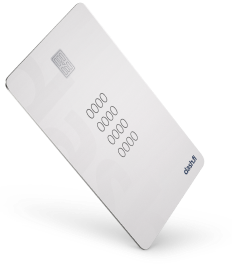If you’ve heard the term “programmatic advertising” or “programmatic media buying” lately, you’re not alone. It’s a pretty popular topic of discussion when marketers get together to talk about advertising and marketing. It’s also sometimes referred to as programmatic marketing—but what is it?
Programmatic Advertising in a nutshell
Programmatic advertising uses automated technology and algorithms for buying media (or ads) on networks like Google, Facebook, and other digital platforms. The term programmatic refers to the way ad space is bought and sold.
Unlike traditional media buying, which is a very manual process, programmatic media buying uses automation tools that look at user signals to make sure that ads reach the right people at the right time.
How does programmatic advertising/media buying work?
To get a handle on how programmatic media buying works, there are some terms you need to be familiar with:
Real-time bidding (RTB): RTB is when the price for digital ads is decided through a real time auction—sometimes referred to as an open auction. This type of auction is open to any advertiser and can be a good way to buy media.
Private marketplace (PMP): This type of auction works like the RTB, but participation is limited to only selected advertisers—think invitation only. There may be a selection process which allows advertisers to apply for that invitation.
Programmatic direct: In this case, the publisher bypasses the auction and sells media at a fixed rate to one or more advertisers.
Additionally, there are three main components to programmatic advertising/media buying:
Sell-side platform (SSP): SSPs allows publishers to sell display, mobile, and video ad impressions to potential advertisers in real time. SSPs include display networks and demand-side platforms and gives publishers greater control over costs.
Demand-side platform (DSP): DSPs enable advertisers to buy ad inventory cross-platform.
Ad exchanger: The DSP connects to the ad exchange, enabling advertisers, networks, and publishers to buy and sell ad space. Prices are set through the bidding process.
Because the process is automated, programmatic media buying guarantees speed and efficiency that is not matched in the traditional media buying.
Programmatic advertising is more efficient than traditional media buying
The traditional advertising or media buying experience can be cumbersome and time consuming because it involves a lot of paperwork, requests for proposals (RFPs), and negotiation between the publisher and the advertiser. By introducing a more automated, algorithm-based way to purchase ad space, it is more efficient because it doesn’t require people to complete the transactions. They can happen much quicker and more accurately.
What type of media is available to programmatic advertisers?
Most of the digital advertising you're familiar with can be programmatic ads.
Display ads:
Although display ads can be any type of online visual advertising, programmatic display ads are those found at the header, footer, or sidebar. Publishers with display networks like Google or Yahoo make it possible to buy and sell this type of display ad. Publishers earn revenue based on the clicks and impressions they generate on the display network.
Video ads:
There are three types of video ads:
In-stream ads: For example, the ads that are run before a YouTube video are considered in-stream ads. Otherwise ads that appear before the video begins (pre-roll), within the middle of the content (mid-roll), or after the video is over (post-roll) are all considered in-stream ads.
Out-stream ads: These are the ads that appear between online articles and sometimes show up as pop-up windows.
In-display ads: These ads are displayed in search results or video recommendations.
Social ads:
Programmatic social advertising leverages user data to determine who will see their ads, the type of format, the ideal time, and how frequently they see them.
Audio ads:
Platforms like Google, SoundCloud, Pandora, BBC, and the Rubicon Project leverage audio ads on their streaming services. Think of them as the audio equivalent of video ads.
Native ads:
Programmable native ads appear in various places on a webpage or app and look like a blog or article.
Digital Our-of-Home (DOOH) ads:
Out-of-Home advertising includes any ads that a consumer might see when away from home. As DOOH ads become more digital, the allow advertisers to better audience targeting, pricing, screen selection, programmatically and works like RTB advertising.
Why consider programmatic advertising?
Programmatic advertising provides advertisers real-time insights into what their potential customers are doing and enables them to target more specifically because they’re leveraging behavior algorithms to make sure their ads are getting to the right people at the right time.
There are potentially a lot of benefits to programmatic advertising and will likely, at some point, become the norm for advertisers online.
